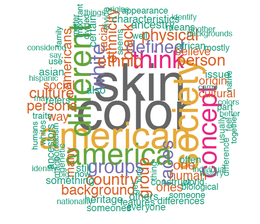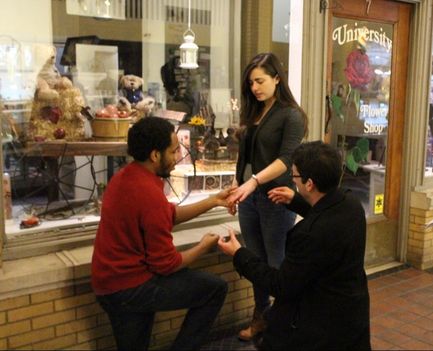My research
My research explores the emergence of social boundaries around immigrants and racial minorities across the world as well as how these boundaries contribute to the reproduction of ethnic-based social inequality. I have examined the socio-political factors that shape the experiences of immigrants in the U.S., the sources of ethnoracial inequality in Latin America, the nature of racial boundaries in the U.S., and the incorporation trajectories of immigrants in Europe.
As an analytical sociologist, I am committed to three basic principles: tackling of theoretically significant and policy-relevant sociological questions, identification of causal effects, and illumination of the mechanisms that bring about these effects. Methodologically, I draw on a variety of statistical approaches to the analysis of administrative, social media, survey, and experimental data. I have also conducted ethnographic and interview-based research.
As an analytical sociologist, I am committed to three basic principles: tackling of theoretically significant and policy-relevant sociological questions, identification of causal effects, and illumination of the mechanisms that bring about these effects. Methodologically, I draw on a variety of statistical approaches to the analysis of administrative, social media, survey, and experimental data. I have also conducted ethnographic and interview-based research.

My work focuses on four research areas:
1. Immigration in the U.S.
2. Race and Ethnicity in Latin America
3. Racial Boundaries in the U.S.
4. Immigration in Europe
1. Immigration in the U.s. Outside of "The Roads End Pub and Club" in Hazleton, PA. 2006. Outside of "The Roads End Pub and Club" in Hazleton, PA. 2006.
I examine the socio-political factors that shape the experiences of immigrants in the U.S. I have examined how local restrictive immigration ordinances, such as English-only declarations and fines for employers of undocumented immigrants, shape the communities in which they are proposed. I relied on semi-structured interviews with 103 residents of Hazleton, PA, a town that passed an anti-immigrant ordinance, to examine this law’s impact on inter-ethnic relations (Flores 2014). Further, I have assessed the impact of anti-immigrant laws on gun sales in Pennsylvania counties to test whether these policies increased residents’ concern with crime spurring self-defensive gun ownership, as I found in Hazleton (Flores 2015). I have also focused on Arizona’s SB 1070, a controversial state bill passed in 2010 that authorized police officers to detain anyone they suspected of being an illegal immigrant (Flores 2017). I evaluate the impact of SB 1070 on public sentiment towards immigrants by using computational text analysis techniques to analyze more than 300,000 immigration-related tweets posted by Arizona residents in 2010. I have also examined whether political elites have the power to influence public perceptions of social groups they praise or denounce. I test this by analyzing the attitudinal effects of Donald Trump’ s 2016 presidential campaign announcement speech, in which he referred to Mexican immigrants as “rapists” and “criminals” (Flores 2018). In a collaborative project with Ariela Schachter, we experimentally investigate the social stereotypes that shape perceived illegality in the U.S. (Flores and Schachter 2018). We find that national origin, social class, and criminal background powerfully shape perceptions of illegality. In a new collaborative project with Emilio Zagheni and Ingmar Weber, we use facebook data to assess the cultural assimilation of Mexican immigrants focusing on musical taste (Stewart et al. 2019). |
Publications:
• Flores, René D. 2014. "In the Eye of the Storm: How did Hazleton′s Restrictive Immigration Ordinance Affect Local Interethnic Relations?” American Behavioral Scientist. Vol. 58(13) 1743−1763. • Flores, René D. 2015. "Taking the Law Into their Own Hands: Do Local Anti-Immigrant Ordinances Increase Gun Sales?” Social Problems. 62, no. 3: 363-390. • Flores, René D. 2017. "Do Anti-immigrant Laws shape Public Sentiment?: A Study of Arizona′s SB 1070 using Twitter data.” American Journal of Sociology 123, no. 2, 333-384. • Flores, René D. 2018. "Can Elites Shape Public Attitudes Towards Immigrants?: Evidence from the 2016 U.S. Presidential Election." Social Forces. 96: 1649-1690. • Flores, René D. 2018. "Interviewing in the Eye of the Storm: Do Local Anti-immigrant Policies Have Social Consequences?" SAGE Research Methods Cases. • Flores, René D. and Ariela Schachter. 2018. "Who are the ’illegals’?: The Social Construction of Illegality in the U.S." American Sociological Review. 83, no. 5: 839-868. • Flores, René D. and Ariela Schachter. Forthcoming. Examining Americans' Stereotypes about Immigrant Illegality." Contexts. • Stewart, Ian, René D. Flores, Ingmar G. Weber, and Emilio Zagheni. Forthcoming. "Rock, Rap, or Reggaeton?: Assessing Mexican Immigrants′ Cultural Assimilation Using Facebook Data." Proceedings of the 2019 Web Conference. |
2. Race and ethnicity in latin america
|
Nation-building ideologies in Latin America have generally downplayed the significance and even existence of racial boundaries within the population. In a series of articles, my colleagues and I assess whether race and ethnicity are important factors that shape the lives of contemporary Latin Americans. I focus on two main indicators, identity and social stratification, to understand how racial and ethnic boundaries function in Latin America.
Publications:
|
3. RACIAL BOUNDARIES IN THE U.S.
|
I explore both the nature and the consequences of racial boundaries in the U.S. In a forthcoming article, I examine the effects of close social ties, namely romantic peers, on women’s perceived attributes. More specifically, I use both focus groups and survey experiments to understand how the race of women’s romantic partners shapes their perceived class status, cultural values, sexual customs, and even their race in the eyes of others.
In a new collaborative project with Ariela Schachter and Neda Maghbouleh, we explore the contemporary rules of racial classification in the U.S. using an experimental methodology. Publications:
|
Working with actors in a photo shoot for an experimental study on attitudes towards interracial relationships. Ann Arbor, MI 2015.
|
4. Immigration in EUrope
Contemporary critics have increasingly questioned the relevance of the concept of “race” around the world. Such critical voices are especially sharp in European countries like France and Germany, where the concept of “race” is generally regarded as “anathema to official thinking.” Instead, the general consensus in European scholarship is that, though racial animosity may have been prevalent once, racism is not as widespread in continental Europe as in the U.S., and that cultural differences, especially Muslim religion, are the main drivers of anti-immigrant sentiment. In contrast, in the U.S., race is commonly considered the dominant social cleavage, a theoretical bent that can be traced to the early work of the Chicago School of Sociology. In this line of research, I adjudicate between these competing theoretical expectations. I analyze immigrants’ discrimination reports as captured by large-scale nationally-representative surveys to assess the emergence of symbolic boundaries around immigrants on the basis of their race, nationality, and religion.
Publications:
• Flores, René D. 2015. "The Resurgence of Race in Spain: Perceptions of Discrimination Among Immigrants in Spain.” Social Forces. 94: 237-269.
- Aristide Zolberg Student Scholar Award, ASA International Migration Section, 2013.
• Flores, René D. "Sticky Boundaries: Do Immigrants in Europe Feel Discriminated Against due to their Religion or Race?” Under review.
• Flores, René D. 2015. "The Resurgence of Race in Spain: Perceptions of Discrimination Among Immigrants in Spain.” Social Forces. 94: 237-269.
- Aristide Zolberg Student Scholar Award, ASA International Migration Section, 2013.
• Flores, René D. "Sticky Boundaries: Do Immigrants in Europe Feel Discriminated Against due to their Religion or Race?” Under review.

